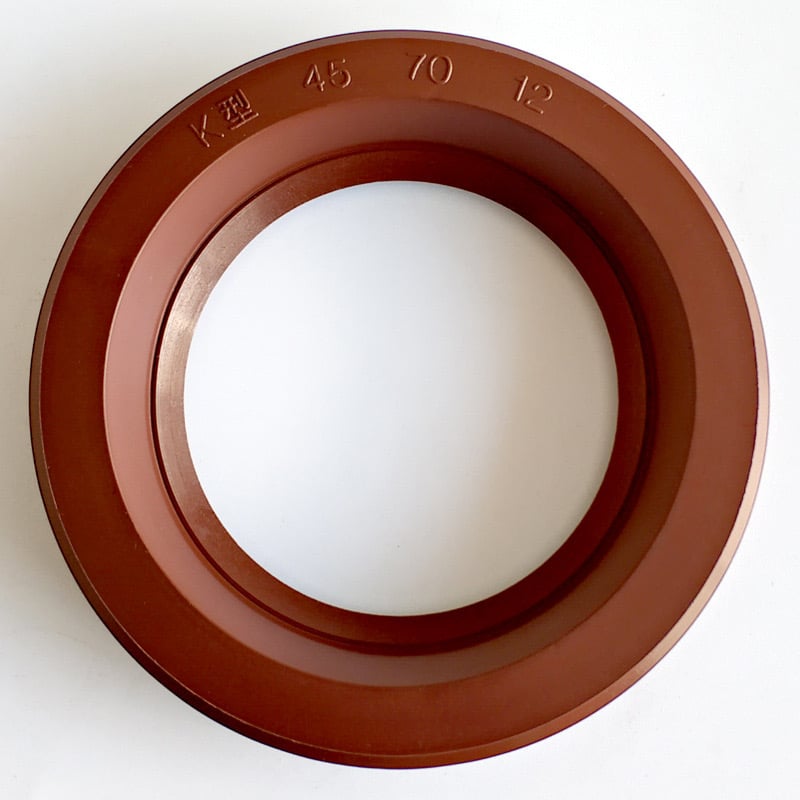Struggling with oil leaks, dust intrusion, or short-lived seals? It might be time to switch to a skeleton oil seal—a trusted solution in high-speed and high-pressure systems.
Skeleton oil seals provide enhanced shaft sealing with internal metal reinforcement, extending service life and performance.

Read on to learn what they are, how they work, and how to choose the right type for your machinery.
What makes a skeleton oil seal different from a standard seal?
Unlike regular rubber seals, a skeleton oil seal includes a metal insert that reinforces the sealing structure.
This “skeleton” helps maintain lip pressure and positioning even under misalignment, pressure, and rotation.

Also known as radial shaft seals, they combine flexibility from rubber (NBR or FKM) with the strength of steel—ideal for motors, pumps, and gearboxes.
Looking for high-strength applications? Explore our Joint d'huile squelette TG4 with dust lip protection.
What types of skeleton oil seals are available?
There’s no one-size-fits-all in dynamic sealing. Each application requires a tailored design.
| Taper | Structure | Lèvre anti-poussière | Utilisation courante |
|---|---|---|---|
| TG4 | Double lèvre avec lèvre anti-poussière | ✅ | Moteurs, pompes, réducteurs |
| TC | Double lèvre avec coque métallique | ❌ | Utilisation industrielle standard |
| Type K | Profil compact | ❌ | Logements étroits, espaces limités |
| Type divisé | Open-style, easy install | ✅ | Field repairs and maintenance |
Notre TC Skeleton Oil Seal is ideal for standard rotation sealing without dust interference.
Which materials are used in skeleton oil seals?
Rubber alone isn’t enough. Material choice defines durability and performance.
| Matériel | Nom et prénom | Propriétés | Cas d'utilisation |
|---|---|---|---|
| NBR | Caoutchouc nitrile | Résistant à l'huile, abordable, -40°C à +120°C | Motors, compressors, low-temp |
| FKM | fluoroélastomère | Résistant à la chaleur et aux produits chimiques, de -30 °C à +200 °C | Gearboxes, engines, high-temp |
Notre Joints FKM are ideal for chemical and thermal extremes. NBR fits general industry needs.
Where are skeleton oil seals commonly used?
Skeleton oil seals are standard in:
- moteurs électriques
- Pompes hydrauliques
- Automotive crankshafts
- Gearboxes
- Industrial fans and blowers
Need guidance? Our Tableau de référence croisée des joints d'huile helps match OEM parts like National and SKF.
How do I choose the right type?
Use this checklist to avoid mismatches:
| Facteur | Que vérifier |
|---|---|
| Diamètre de l'arbre | Must match seal’s inner diameter |
| Housing Bore | Fit outer diameter tightly |
| Speed Rating | NBR ≤15 m/s, FKM supports higher speeds |
| Température | Use FKM above 120°C |
| Media Resistance | FKM needed for fuel/solvent exposure |
| Dusty Conditions | Use types with dust lips (TG4, Split) |
For tough environments, we recommend the TG4 double-lip design with NBR or FKM rubber.
Conclusion
Skeleton oil seals combine durability, stability, and high sealing integrity. The right type ensures reliability across electric, hydraulic, and rotating systems.
Request Custom Sizes or Bulk Supply
We offer OEM, split-style, and dual-lip variants for all sectors.
📩 Courriel : [email protected]
📱 WhatsApp : +86 17622979498
Related topic
Guide des joints d'étanchéité : 5 conseils pour un fonctionnement fiable (2025)
High-Temperature Sealing: How to Prevent Failures in Extreme Conditions?
Comment identifier le bon joint d'huile par numéro de pièce ou par taille ?


